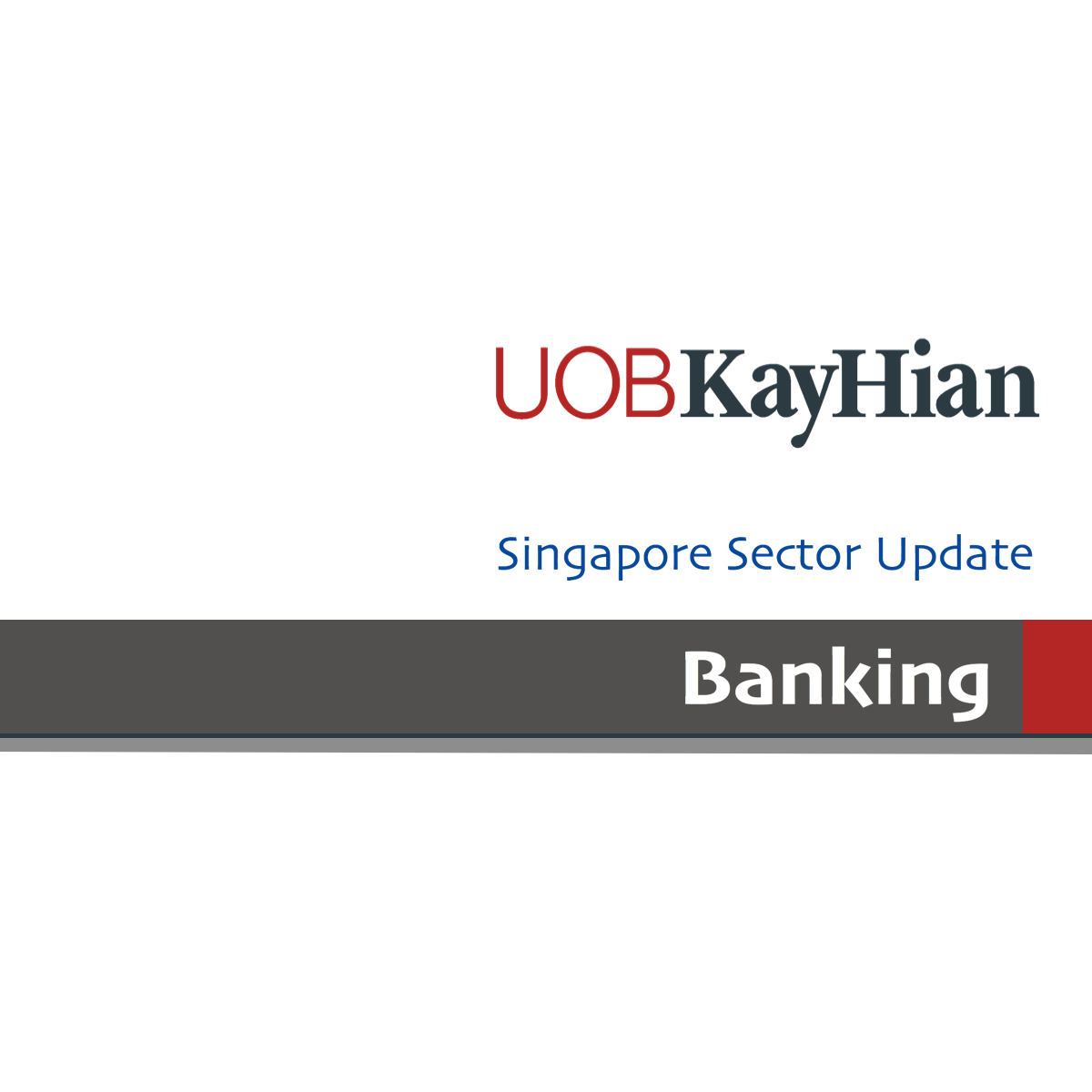 Singapore Banking Stocks Comparison
DBS vs OCBC vs UOB
UNITED OVERSEAS BANK LTD
U11.SI
DBS GROUP HOLDINGS LTD
D05.SI
OVERSEA-CHINESE BANKING CORP
O39.SI
Singapore Banking Stocks Comparison
DBS vs OCBC vs UOB
UNITED OVERSEAS BANK LTD
U11.SI
DBS GROUP HOLDINGS LTD
D05.SI
OVERSEA-CHINESE BANKING CORP
O39.SI
Singapore Banking - 4Q17 Round-up ~ Dividends Aplenty
- Banks provided a generous serving of final and special dividends after Basel III reforms were finalised in Dec 17. Banks have guided for loan growth of high single-digits and we expect NIM expansion to continue into 2018.
- Maintain OVERWEIGHT.
- OCBC is our preferred BUY (Target: S$14.90) due to IPO of Great Eastern (Malaysia) in 2H18. However, DBS could provide more short-term momentum in the run-up to the next FOMC meeting on 20-21 March (Target: S$30.40).
WHAT’S NEW
- DBS’ and OCBC’s 4Q17 results beat expectations, while UOB’s results were in line with expectations.
Moderate pick-up in loan growth.
- DBS and OCBC achieved faster loan growth of 7.3% and 7.8% y-o-y respectively, compared with 4.7% y-o-y for UOB.
- DBS and OCBC benefitted from stronger growth in Singapore and Greater China. Conversely, UOB was held back when loans contracted by 0.6% q-o-q in 2Q17.
- We also noticed that DBS and OCBC grew deposits by a significant 3.2% and 5.7% q-o-q respectively in 4Q17.
NIMs on an upward trend.
- NIM expanded 7bp y-o-y for DBS and 4bp y-o-y for OCBC due to higher SIBOR and SOR. UOB registered NIM expansion of 12bp y-o-y, aided by higher yield from investment securities through extending durations.
Double-digit growth in fees.
- DBS, OCBC and UOB achieved double-digit growth in fees of 23.5%, 16.9% and 10.2% y-o-y respectively. Their wealth management fees also grew 44%, 38% and 29% y-o-y respectively, while assets under management (AUM) expanded 24%, 25% and 12% y-o-y.
- DBS’, OCBC’s and UOB’s credit cards fees grew 9%, 5% and 8% y-o-y respectively.
Looking at O&G sector from the rear view mirror.
- OCBC and UOB cleaned up their books by leveraging on the transition to FRS 109. They recognised new NPLs of S$1,355m and S$1,167m respectively in 4Q17, mainly for the oil & gas support services segment, and NPL ratio deteriorated by a similar 18bp to 1.44% and 1.78%.
- For OCBC, new NPLs recognised were essentially loans that are not overdue, highlighting OCBC’s conservatism in recognising NPL.
- For UOB, loans overdue by 90 to 180 days increased substantially by S$275m.
- DBS’ NPL ratio improved by 5bp q-o-q to 1.68% in 4Q17 after accelerated recognition of NPL in 3Q17.
Generous serving of final and special dividends.
- DBS, OCBC and UOB increased their final dividends by 100%, 5.6% and 28.6% y-o-y respectively to 60 S cents, 19 S cents and 45 S cents. DBS and UOB also declared special dividends of 50 S cents and 20 S cents respectively.
- Assuming DBS, OCBC and UOB pay dividends of 120 S cents (2 x 60 cents), 38 S cents (2 x 19 S cents) and 90 S cents (2 x 45 S cents) for 2018, their dividend yield would be 4.2%, 3.0% and 3.4% respectively.
Rock solid capital base.
- DBS and UOB are extremely well capitalised with CET-1 CAR at 13.9% and 14.7% respectively.
- OCBC’s CET-1 CAR is slightly lower at 13.1% but could be boosted if it divests 30% of Great Eastern (Malaysia) through an IPO or trade sale in 2H18 to comply with the limit on foreign ownership.
ACTION
- Maintain OVERWEIGHT. The down-sizing of central banks’ balance sheets coupled with resilient global growth could energise banks’ share prices and lift their valuations towards and above their mid-cycle valuations.
- Banks will also benefit from NIM expansion due to higher interest rates.
SECTOR CATALYSTS
- Rising interest rates and bond yields.
- Easing of pressure on asset quality from the O&G sector, resulting in moderation of credit costs.
ASSUMPTION CHANGES
- We maintain our existing earnings forecast.
RISKS
- Rapid increase in the federal funds target rate (steep rate hikes) that may trigger capital outflows from countries in Southeast Asia.

Jonathan Koh CFA
UOB Kay Hian
|
http://research.uobkayhian.com/
2018-02-19
UOB Kay Hian
SGX Stock
Analyst Report
99998.000
Same
99998.000
30.400
Same
30.400
14.900
Same
14.900

